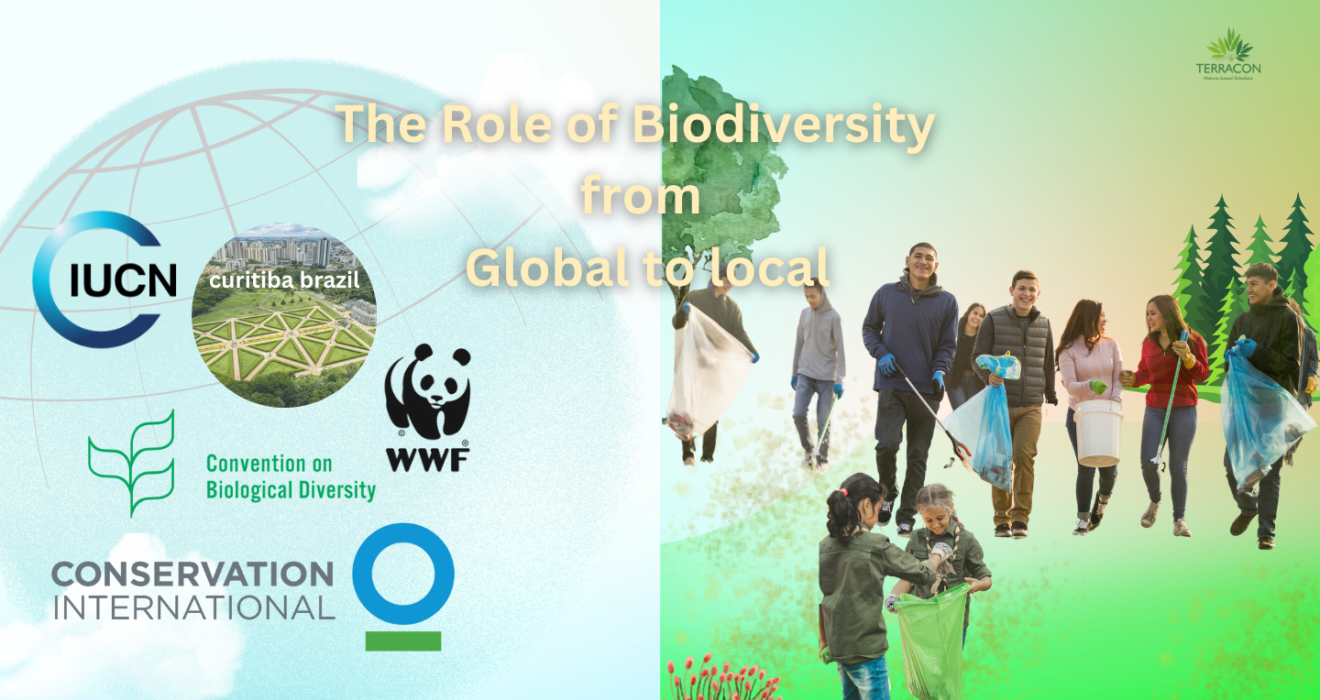Introduction
Biodiversity is a complex issue because it involves the intricate relationships between living things and their environment. These relationships are crucial for maintaining healthy ecosystems. Unfortunately, human activities have greatly increased the rate of species extinction over the past 100 years. In fact, we have lost species at a rate 1,000 times faster than natural extinction rates. Additionally, the distribution of species is decreasing, meaning that many species are only found in small areas.
Despite the importance of biodiversity, it has not been adequately addressed in global policies, strategies, and programs. The underlying causes of biodiversity loss, such as habitat destruction and climate change, have not been sufficiently addressed. However, there is some good news. Thanks to the efforts of communities, non-governmental organizations (NGOs), and governments, some biodiversity has been preserved. If not for these efforts, we would have lost even more biodiversity. learn here what is biodiversity
Shift in Perspective: From Global to Local
The connection between national governments and biodiversity protection was officially acknowledged in the Convention on Biological Diversity (CBD). Enacted in December 1993, the CBD was the first global agreement to address all aspects of biological diversity, and this global agreement solidified the importance of biodiversity protection and conservation. As humans continue to exert the most significant influence on the rates of biodiversity loss and species extinction, local governments are in a unique position to implement biodiversity actions, and reach out to people about the importance of sustainable biodiversity management. know about global efforts to protect biodiversity
In 2007, there was a significant meeting in Curitiba, Brazil, where leaders focused on biodiversity. They discussed how local governments can actively contribute to protecting the variety of life on Earth. This meeting resulted in the Curitiba Declaration on Cities and Biodiversity. It emphasized the importance of involving local authorities in carrying out the goals set by the Convention on Biological Diversity (CBD), a global agreement formed in 1993.
Following this, in May 2008, the 9th Conference of the Parties (COP) to the CBD was held in Bonn, Germany. During this conference, there was a parallel event called the Mayors’ Conference on Local Action for Biodiversity. Here, local leaders discussed their initiatives to slow down the worldwide loss of biodiversity. They came up with the “Bonn Call for Action,” which officially recognized and endorsed the influence of local governments in the CBD. This recognition highlighted the need to support local governments so they could effectively carry out the objectives outlined in the CBD for biodiversity conservation.
India has played a significant role in the Convention on Biological Diversity (CBD) and has been an active participant in the global efforts to conserve biodiversity. Here are a few notable instances:
- India was one of the first countries to sign the CBD in 1992 and ratified it in 1994.
- India has been an active participant in the Conference of the Parties (COP) to the CBD, which is the governing body of the convention. India has hosted the COP twice, in 1998 and 2012.
- India has implemented several initiatives to conserve biodiversity, including the establishment of protected areas, such as national parks and wildlife sanctuaries, which cover over 5% of the country’s geographical area.
- India has also launched several programs to promote sustainable use of biodiversity, such as the National Biodiversity Authority, which was established in 2003 to regulate access to biological resources and ensure fair and equitable sharing of benefits arising from their use.
- India has also been actively involved in the development of the Nagoya Protocol on Access and Benefit-Sharing, which is a supplementary agreement to the CBD that aims to ensure fair and equitable sharing of benefits arising from the use of genetic resources
National programmes or legislation can be crucial in creating a favourable environment to support effective “bottom-up” initiatives led by communities, local authorities, or businesses.
Biodiversity and the Role of Local Governments
Biodiversity is the variety of life on earth upon which human well-being is dependent. Losses in biodiversity, along with the degradation of ecosystem services, have occurred more rapidly in the past hundred years than at any other time in human history. The five main factors driving biodiversity loss are habitat change, overexploitation of resources, pollution, invasive species, and climate change. As cities and towns further develop on their green spaces and encroach on the natural spaces surrounding them, rapid urbanization continues to be a major contributing factor to the loss of biodiversity. Healthy ecosystems ensure long-term sustainability, however, urban regions, and the economies supporting them, consume 75% of extracted natural resources (UNEP, 2009). As urbanization increases and natural resources become more fragmented, the impetus to protect and manage valuable ecological spaces grows.
Urban regions present a wide range of challenges for species. To address these issues and make meaningful strides in biodiversity conservation, local governments must enhance their efforts. This includes focusing on conservation initiatives and promoting the sustainable use of biodiversity and ecosystem services. By doing so, they can better protect natural habitats and support the long-term health of ecosystems.
Beyond providing essential social and ecological benefits—such as food,fiber, medicine, fresh water, crop pollination, pollutant filtration, and protection from natural disasters—sustainable biodiversity management also enhances cultural services. These include spiritual and religious values, educational opportunities, and recreational and aesthetic experiences.
Biodiversity conservation and protection have traditionally been seen as the responsibility of national and provincial governments. However, local governments play a vital role in addressing biodiversity loss. Due to their close proximity to residents and specific responsibilities, local governments can develop customized and integrated strategies to protect and sustain ecosystems and species. They have several mechanisms to drive local biodiversity action, including:
Land Use and Urban Planning
Local governments manage local areas in a planned and coordinated way that reflects the community’s shared vision for biodiversity.
Licensing and Regulation
Local governments set the local regulatory environment through assessment and approval processes, the use of surcharges and rebates, and the enforcement of local laws to implement and uphold biodiversity management and protection policies.
Facilitation, Advocacy, and Leadership
Local governments, being in close contact with community organizations, businesses, residents, and other stakeholders, can use this influence to develop shared understandings and encourage community-wide responses to biodiversity loss.
Community Service Delivery, Community Development, and Civic Engagement
Local governments are dedicated to preserving the health, safety, and well-being of residents while ensuring active civic participation.
Workforce Development
As responsible corporate citizens, local governments can lead by ensuring good occupational health and safety, promoting sustainable business practices, and increasing local investments and services that support biodiversity enhancement strategies.
Integrating Biodiversity into Governance
Since biodiversity loss impacts a wide range of government services, integrating conservation and protection measures into these services is essential for sound biodiversity management and good governance.
Biodiversity and the Role of Local Communties
As we navigate the complexities of biodiversity conservation, it’s essential to recognize the critical role that local communities play in protecting our planet’s precious natural resources. They are often the primary custodians of natural resources, relying on them for their livelihood, forestry , fishing , farming ,culture, and identity. By involving local communities in conservation efforts, we can tap into their traditional knowledge and practices, which can be leveraged for biodiversity conservation.
However, biodiversity loss can have far-reaching consequences, including a decline in ecosystem services, affecting soil, crop, and fishery productivity, and ultimately impacting food security. The nutritional composition of foods varies greatly, and biodiversity loss can lead to a decline in micronutrient availability, exacerbating malnutrition and related health issues.
Moreover, biodiversity loss can have significant direct human health impacts. Changes in ecosystem services can affect access to clean water, increase exposure to water-borne diseases, and exacerbate the spread of infectious diseases. In fact, approximately two-thirds of known human infectious diseases are shared with animals, and the majority of recently emerging diseases are associated with wildlife. Biodiversity is also essential for the discovery of new medicines and pharmacological treatments, with traditional medicines used by 60% of the world’s population playing a vital role in primary health care.
To address these challenges, community-based conservation offers a promising approach. By involving local communities in the management and conservation of natural resources, we can tap into their traditional knowledge and practices, leading to improved conservation outcomes. Local communities have a deep understanding of their local ecosystems and species, enabling them to develop effective conservation strategies. They are also more likely to be invested in the success of conservation efforts, as they rely on natural resources for their livelihood.
Community-based conservation can lead to increased community ownership and stewardship of natural resources, fostering a sense of pride and ownership among community members. This approach can also lead to improved livelihoods for local communities, as they benefit from the sustainable management of natural resources, resulting in improved economic outcomes, health, and well-being. By empowering local communities to take an active role in conservation, we can ensure the long-term health and well-being of both people and the planet.
Conclusion
Local communities play a vital role in biodiversity conservation, and their involvement is crucial for the success of conservation efforts. Community-based conservation approaches can lead to improved conservation outcomes, increased community ownership and stewardship of natural resources, and improved livelihoods for local communities. Local governments can drive local action on biodiversity by utilizing mechanisms such as land use and urban planning, licensing and regulation, facilitation, advocacy, and leadership, community service delivery, community development, and civic engagement, and workforce development. By empowering local communities to take an active role in managing their natural resources, we can ensure the long-term conservation of biodiversity.

Written by
Anjeeta Goud
Team Business Development and Strategy
Terracon Ecotech
Reference :
https://iclei.org/
https://earth.org/why-conservation-efforts-need-to-support-community-livelihoods/
https://www.quora.com/How-can-individuals-contribute-to-preserving-biodiversity-in-their-local-communities
https://sustainability.yale.edu/blog/6-ways-preserve-biodiversity
https://www.iucn.org/sites/default/files/2022-06/es-2021-12625.pdf
https://blogs.uoc.edu/in3/the-key-role-of-local-communities-in-biodiversity-conservation/
https://blogs.uoc.edu/in3/the-key-role-of-local-communities-in-biodiversity-conservation/
https://www.amnh.org/research/center-for-biodiversity-conservation/what-is-biodiversity
https://royalsociety.org/news-resources/projects/biodiversity/why-is-biodiversity-
important/https://www.iucn.org/sites/default/files/2022-06/es-2021-
12625.pdfhttps://environment.ec.europa.eu/topics/nature-and-biodiversity_en




